I pull following data as orientation in pipe in clock position from csv file save as D
[1] 1:48 3:10 11:00 8:36 9:30 9:16 12:08 4:14 1:04 9:06 1:12 11:22 9:44 1:14 1:42 10:22 11:26 2:18 2:44
[20] 9:22 1:00 12:58 10:14 10:02 10:02 10:24 1:04 1:28 2:22 1:56 9:42 10:06 10:16 2:28 10:18 10:38 10:00 9:52
[39] 10:30 9:26 1:26 5:32 2:02 11:08 8:42 8:52 12:50 1:02 1:30 7:08 7:04 7:10 7:08 10:18 10:10 9:20 8:40
[58] 9:10 9:06 8:16 8:28 6:14 10:08 10:10 1:04 1:44 5:58 6:48 5:52 9:30 10:30 10:12 10:34 10:06 2:38 4:32
[77] 6:20 1:28 2:30 2:06 9:38 2:42 9:22 10:44 1:38 11:44 1:46 9:00 11:10 11:10 11:14
78 Levels: 1:00 1:02 1:04 1:12 1:14 1:26 1:28 1:30 1:38 1:42 1:44 1:46 1:48 1:56 10:00 10:02 10:06 10:08 ... 9:52
Try to do some exercise to data :
> density(D)
Error in density.default(D) : argument 'x' must be numeric
> typeof(D)
[1] "integer"
> min(D)
Error in Summary.factor(c(13L, 49L, 30L, 63L, 74L, 70L, 37L, 50L, 3L, : ‘min’ not meaningful for factors
> strptime(D,format = %H-%M)
Error: unexpected SPECIAL in "strptime(D,format = %H-%"
I need D as meaningful value in time format HH:MM to do analysis and ploting.

